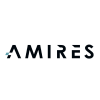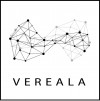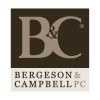6 August, 2021
The European Commission publishes an annual status report on the use of nanomaterials in cosmetic products. The 2021 report, released at the end of July, includes the following findings:
- Every day, on average ten new cosmetic products containing nanomaterials are placed on the EU market, mostly with a colorant or UV-filter function. For context, about 800 new cosmetic products are notified daily on the Cosmetic Products Notification Portal (CPNP). The use of nanomaterials in cosmetics has remained stable over the last five years;
- Notifications are unevenly distributed across the EU, with percentages varying from 0.8% to 5.5% for newly-notified cosmetics containing nanomaterials, and from 6.5% to 43.7% for overall nanomaterial notifications;
- The nanomaterials catalogue released by the Commission in 2019 was found to represent an accurate picture of the market (although with limitations intrinsic to the notification process);
- Most of the opinions produced by the Scientific Committee on Consumer Safety (SCCS) were deemed inconclusive due to the lack of (sufficient) data. The report therefore mentions the need for the responsible persons to provide information which is as accurate as possible when notifying nanomaterials in cosmetics.
The report also looked at the definition of nanomaterial, the notification process, the scientific assessment of nanomaterials and labelling of cosmetic products containing nanomaterials. It concluded that:
- An alignment of the definition in the Cosmetics Regulation with the horizontal definition of Recommendation 2011/696/EU, currently under revision, might increase coherence but would need to be thoroughly assessed;
- Some shortcomings exist in the notification process, such as the discrepancy between the safety assessment (carried out at the ingredient level) and the notification itself (made at the product level), as well as the short assessment timeline which can create issues for economic operators that need to plan their business activities in advance;
- The scientific assessment could be further improved. To this purpose, the report mentions the possibility to extend to nanomaterials the authorization system laid out in Art. 14 of the Regulation, which currently applies to colorant, preservatives, and UV-filters;
- Digital labelling options should be explored to complement and improve the information provided to consumers (a report on the public perception of nanomaterials published by EUON in 2020 found that, the less knowledgeable consumers are about nanomaterials, the less likely they are to buy a product containing them).
The full Commission report can be found at this link.



















